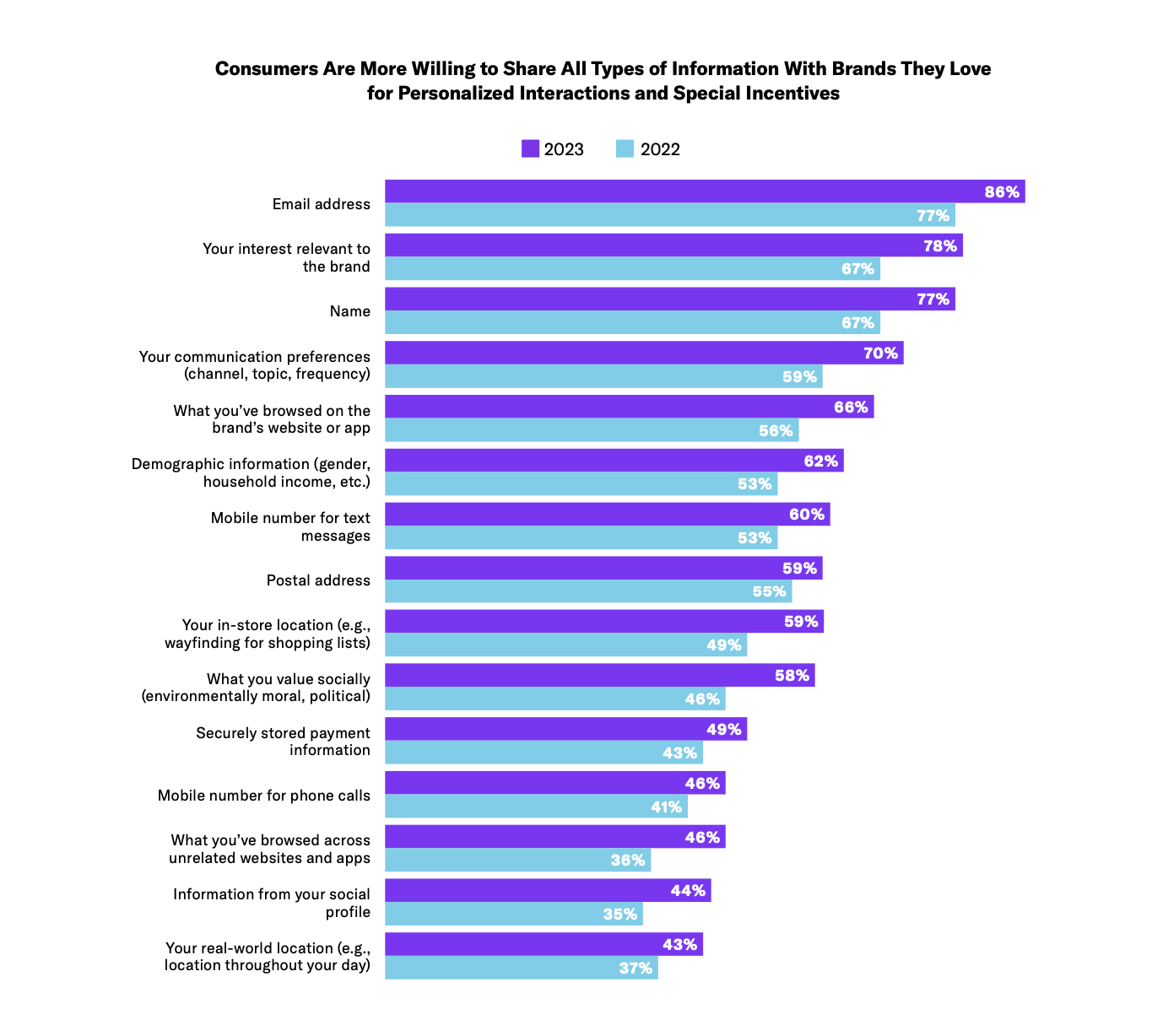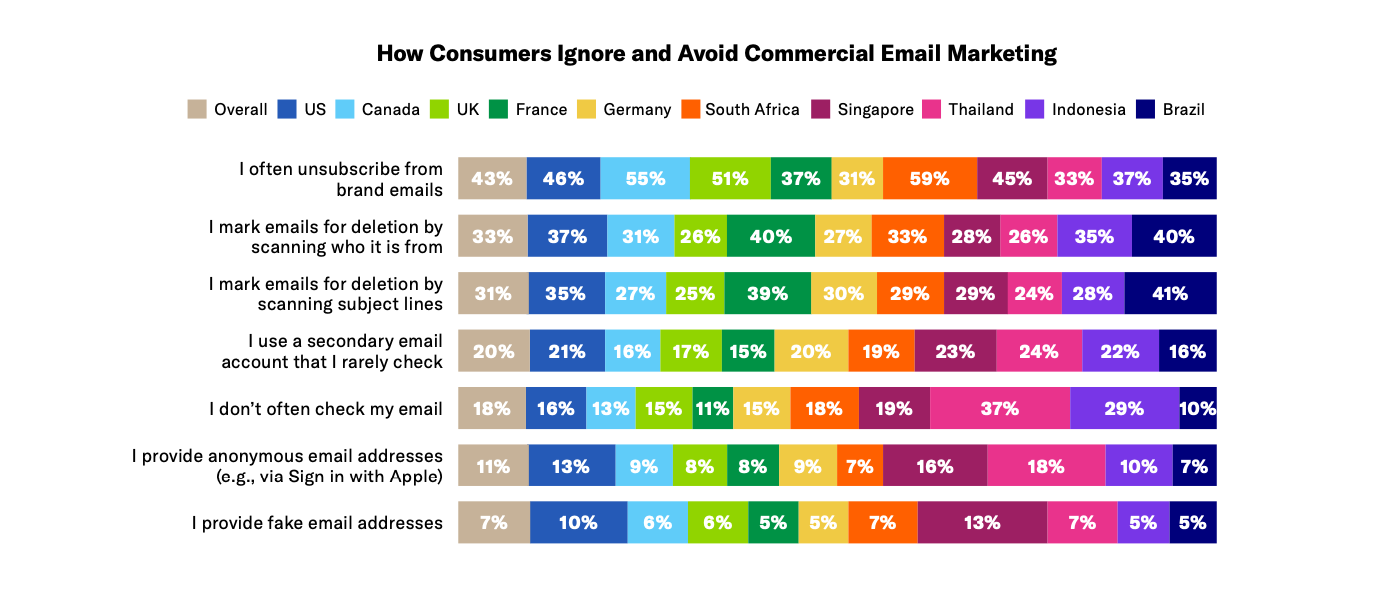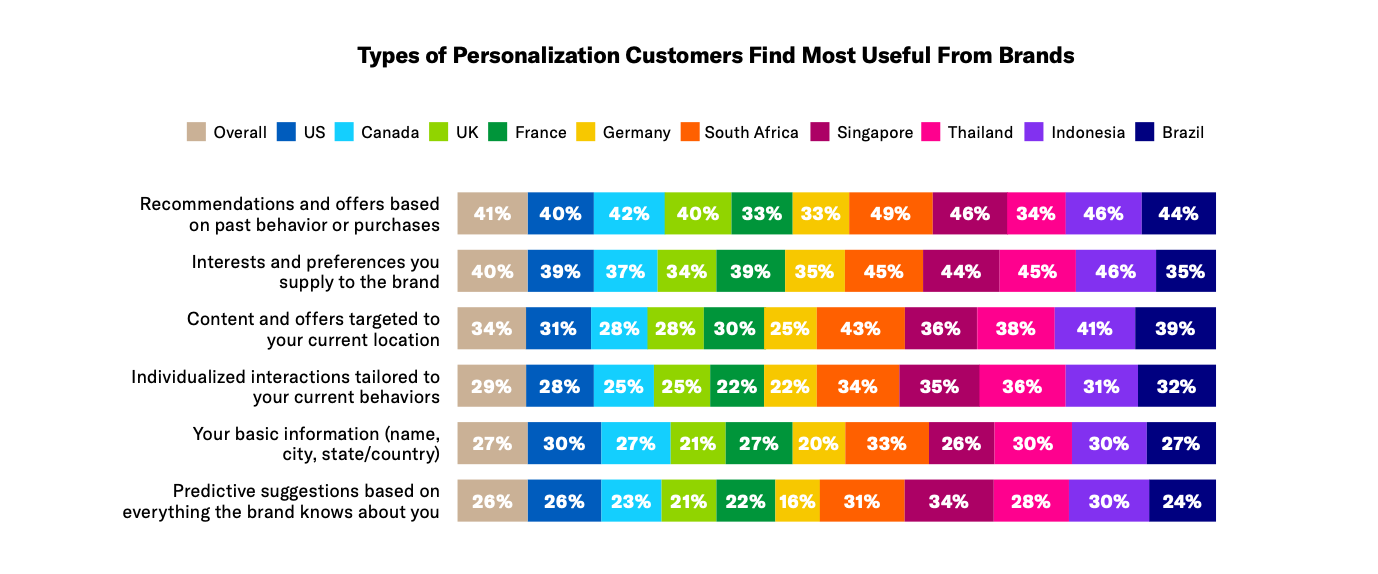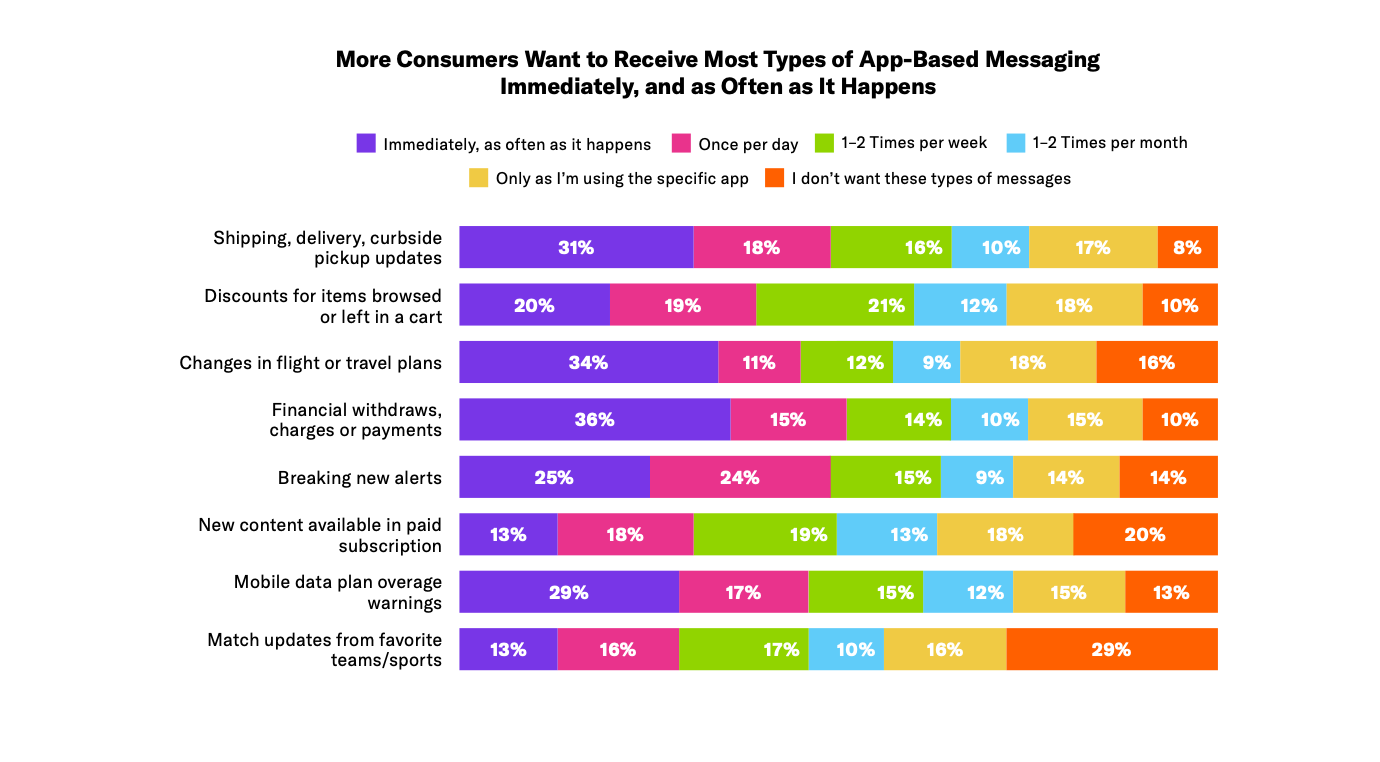Brands today are facing a mix of economic uncertainty, rising acquisition costs and growing data regulations. To help executives and marketers better understand evolving consumer preferences, behaviors and expectations and more quickly create greater customer value and mutual benefit, our team at Airship recently released a new global report, “The Mobile Consumer 2023.”
In partnership with Sapio Research, Airship surveyed more than 11,000 consumers across 10 countries and found that people are more willing to share all types of information with brands this year in order to receive personalized interactions and special incentives. Of the 15 different types of information we tracked year-over-year, email addresses are the most freely shared at 86% of respondents followed by “interests relevant to a brand” (78%), which overtook “name” as the second most shared information.

Rounding out the top five types of information consumers will share the most are “their communication preferences” and “what they’ve browsed on a brand’s app or website,” highlighting the importance of a customer-centric approach to brand interactions. In fact, the information seeing the biggest year-over-year gains in consumer willingness to share is “what they value socially (environmental, moral, political or religious).”
Emails Increasingly Left Unread
While email addresses are most commonly shared information, it’s worth noting that 79% of consumers ignore or delete marketing emails from brands they love half the time or more (up 1% year-over-year). Younger generations, led by Gen Z, are less likely than Gen X and boomers to pursue traditional methods of avoiding commercial email — by unsubscribing or deleting emails by scanning sender or subject lines. Instead, they are much more likely to say they don’t often check their email, use a secondary email account they rarely check and use both anonymous email addresses (e.g., via Sign In with Apple) or fake ones.

People Want Personalization That’s Useful, Not Creepy
Globally, the top three types of personalization consumers find to be most useful are “recommendations and offers based on past behavior or purchases” (41%), “interests and preferences supplied to the brand” (40%) and “content and offers targeted to their current location” (34%).
With very few exceptions,“predictive suggestions based on everything the brand knows about you” was ranked the least useful personalization method across all countries, age groups and income levels. The outliers? Gen Z, consumers in Singapore and high-income households, who find this type of personalization to be slightly more useful than another low performer — “basic information (name, city, state/country).”

Mobile Brings Immediacy and Customer Controls
When asked about how often they like to receive specific types of app-based messaging from brands, more consumers indicated “immediately, and as often as it happens” as their preferred frequency for five of eight different types of messaging. The kind of immediacy that consumers want in today’s mobile-first era is more nuanced than it may seem on its face. The only frequency option gaining preference across seven message types tracked year-over-year was “only as I’m using the specific app.”
Brands who haven’t already added in-app messaging should swiftly do so to reach the growing segment of customers who want engagement only when they’re focused on your app experience. It’s an important addition to push notifications, which reach the nearly 2X more customers who prefer messaging “immediately, as often as it happens.”
While consumers may have varied preferences for the frequencies of app-based messaging, these findings illustrate why it’s important for brands to give customers control over the types of messages they receive, as well as where and how often they get them.

People want a much more customer-centric approach and are willing to share valuable information in exchange for mobile-enabled conveniences and personalized service — which in turn allows brands to serve them better and makes opt-out much less likely. It just so happens that apps are where the exchange of value between customers and brands is most respected and rewarded.
Download “The Mobile Consumer 2023” report from Airship for regional and generational insights across topics such as:
- What leads consumers to continue to use apps
- Why consumers delete apps and how quickly do they decide to do so
- How consumers use smartphones while shopping in-store
- What drives people to opt in to mobile app push notifications



